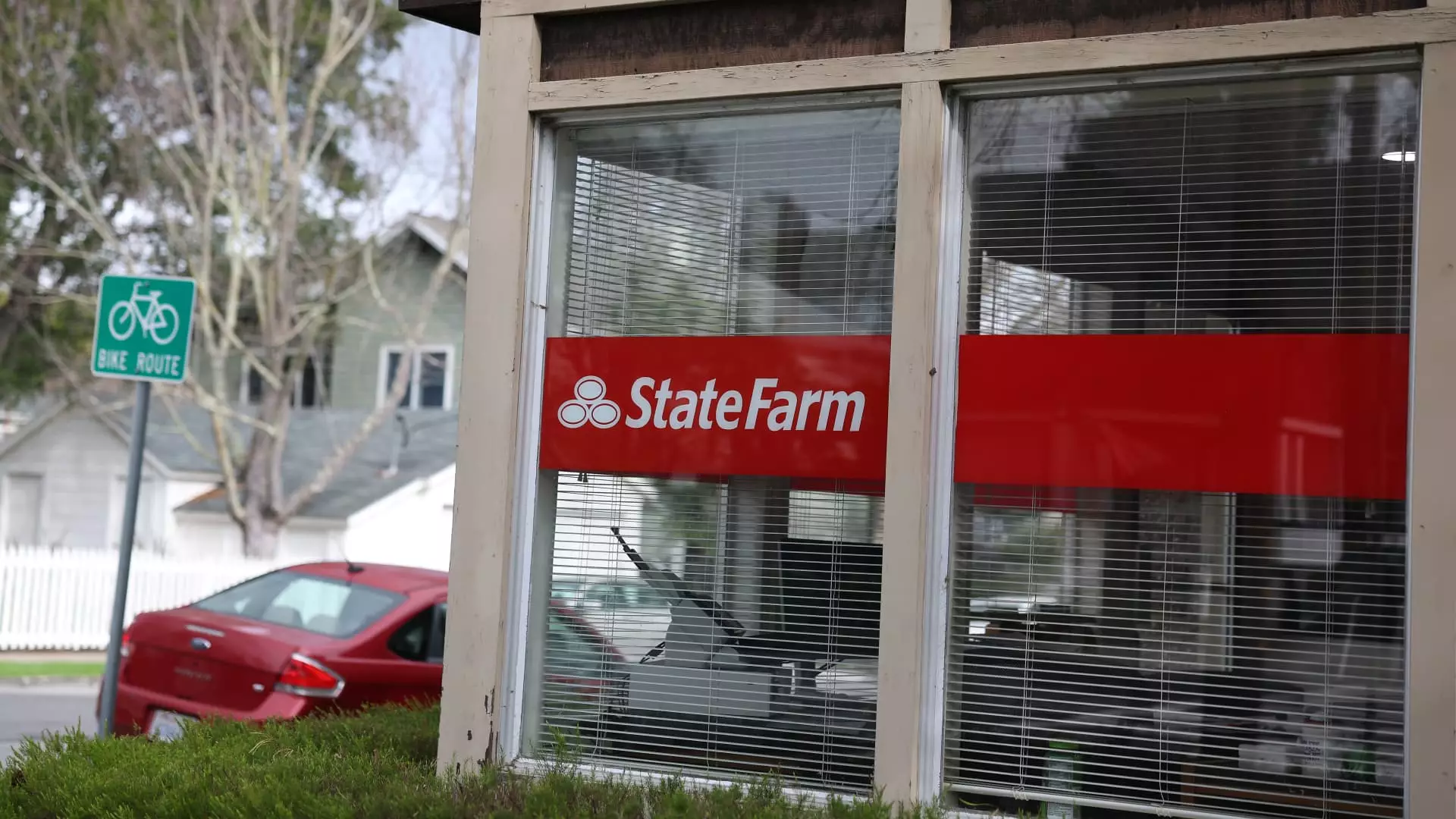California is once again in the eye of a financial storm, as State Farm—one of the largest property insurers in the state—pleads for an emergency rate increase that could significantly impact millions of homeowners. The stakes are high: an increase of 17% for homeowners’ policies and an eye-watering 38% for renter dwelling policies. In a situation likened to the Titanic, the warning has been issued that should these rate hikes not be approved, around 3 million Californians might find themselves without coverage.
The underlying issue isn’t just the wildfires that devastated Los Angeles and led to staggering losses estimated at $250 billion to $275 billion; it’s the susceptibility of California to an ever-growing array of natural disasters. With State Farm General holding a substantial 20% of California’s homeowners market—representing roughly 3 million policies—its financial health is pivotal not only for its customers but for the broader stability of the state’s insurance marketplace. The impact of these proposed hikes is seismic, extending far beyond mere numbers; it symbolizes a broader worsening of the insurance landscape in California.
Is Rate Hike Justified or a Cry for Help?
State Farm argues that these increases are essential for maintaining capital levels and avoiding an even graver financial crisis. However, this justification raises profound questions. How can an insurance company that has been operating in California for decades suddenly find itself on the verge of collapse? The recent wildfires have certainly accelerated their troubles, but they are not the sole reason. With the insurance market already facing challenges—where insurers pay out more in claims than they take in from premiums—the increasing frequency of natural disasters has thus been a ticking time bomb.
It is pertinent to note that addressing the pressing need for financial stability should not come at the cost of Californians’ security. The California Department of Insurance has cautiously supported the hike, highlighting the precarious state of affairs, merging the urgent need for financial recovery with a stark reminder: consumers should not bear the brunt of an industry grappling with risk miscalculations and poor underwriting performances.
Challenges of a Saturated Insurance Market
The California insurance market is saturated, with many insurers fleeing the state due to overwhelming claims and inadequate premium revenues. State Farm’s decision to halt writing new homeowners policies and the non-renewal of 72,000 existing policies exemplifies this trend. Such drastic measures indicate a market at breaking point—where the very vessel of protection for homeowners devolves into a sinking ship. The rationale behind these decisions may align with financial prudence, but it paints a troubling picture for all Californians seeking reliable insurance coverage.
Economist David Appel’s prognosis of unsustainable market conditions is alarming. With state avenues like the FAIR plan ineffectively addressing the exodus of insurers, the reality is stark: many Californians are being forced into a costly insurance pool, one with insufficient capacity to handle the deluge of demands from displaced clients. Such conditions could foster a deeply inequitable scenario; those who can’t afford necessary coverage will be left desperately seeking refuge in a system that is increasingly strained.
Your Insurance, Your Future? Consumer Rights at Risk
A debate is raging—the kind that speaks to the heart of consumer rights and market responsibility. Consumer advocacy groups, like Consumer Watchdog, argue against the proposed rate hikes on the grounds that State Farm has yet to convincingly justify its case. With the significant drop from a proposed 22% to 17%, there are palpable concerns that this is a mere tactic to mitigate discontent rather than a response to empirical need. William Pletcher of Consumer Watchdog stresses the importance of not accepting a proposed rate hike without sufficient justification. It is a call to uphold ethical standards in the insurance industry. Can we really afford to allow companies to react to crises by merely increasing costs on already beleaguered consumers?
The crux of this situation is not solely the numbers but the lives interconnected with these policies. Every home is not just a financial investment; it represents security, hope, and the foundations of a livelihood. In a politically charged environment, where narrative and action often clash, the central theme remains: how to ensure justice for the consumer while catering to an industry under stress. If we are to champion liberal values, we must advocate for sustainable solutions that do not disproportionately impact those least able to afford it.
In these tumultuous times, Californians are left grappling with profound uncertainty. As hearings continue, one thing is clear: the outcome will ripple through homes, communities, and the very fabric of California’s future insurance landscape.

